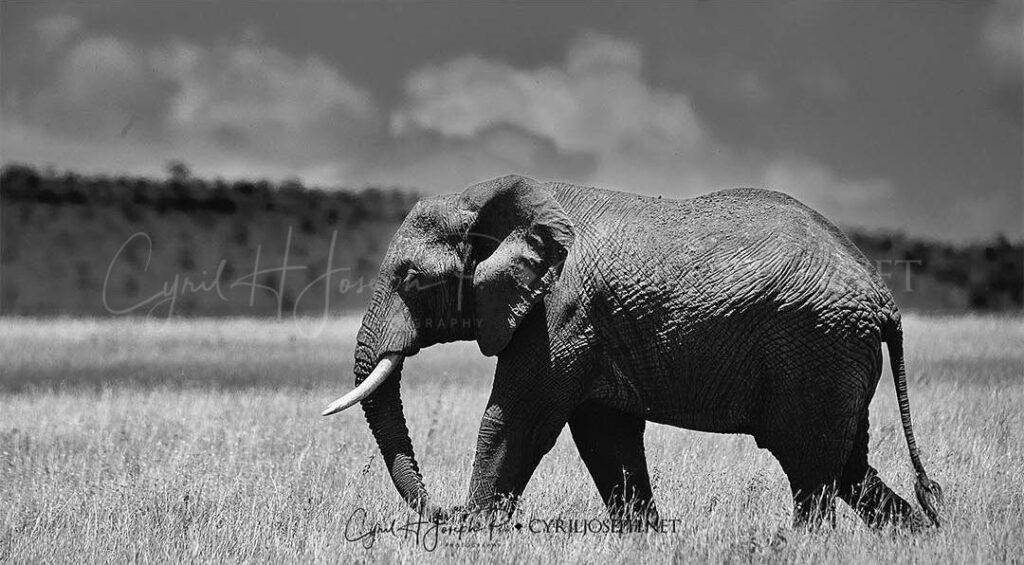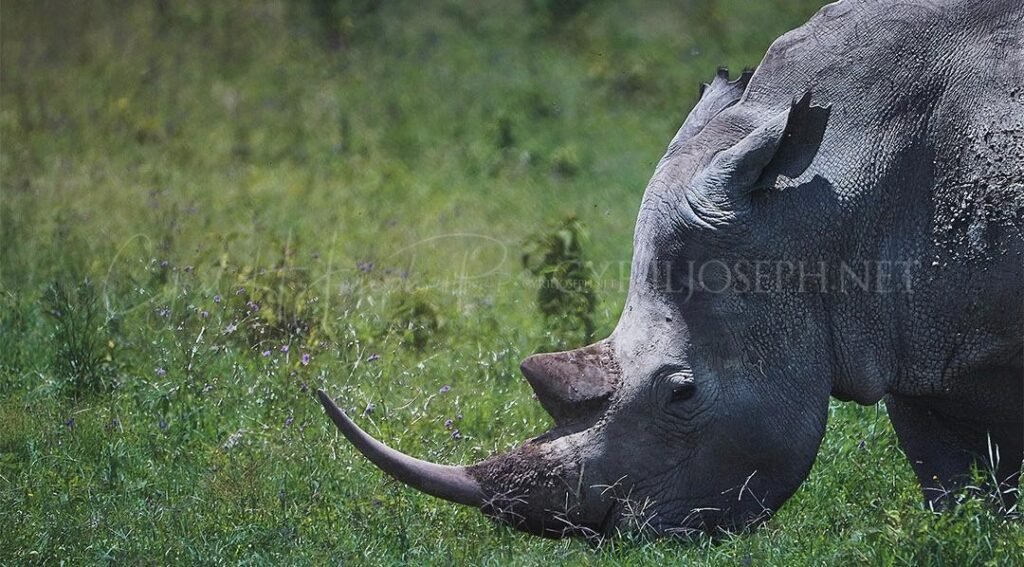Among the most repeated or well-known expressions when traveling to Africa are Jambo, Hakuna Matata and The Big Five. This last one is used to let visitors know, when visiting the parks, that it is a must-see observe lions, leopards, elephants, buffaloes and rhinos in their natural environment.
If you visit the best-known parks on that continent such as Serengeti, Masai Mara and Ndutu, among others that are very popular and famous, you will be able to see the habitats and way of life of each previously mammals mentioned.
African elephant
It is obvious that one of them are easier to observe than others. For example, the African buffalo and elephants are the easiest to find in the wide plains and forests that form their habitat.

Although occasionally elephants are observed alone, most of the time they can be seen in herds whose leadership is matriarchal. The oldest female is the leader of the herd. Male elephants are usually part of the herds but their work is protective.
Elephants usually live in a natural environment, between 60 and 70 years old. They are considered the largest land animals on planet. Their gestation period is 22 months which makes its population growth somewhat slow. On march 2021 the IUCN (International Union for Conservation of Nature) Red List assessment found that they are more endangered than previously thought and they are considered “critically endangered”.
Cape buffalo
They are formed into herds, let’s say they are the older brothers of the bovine breed. His anatomy and strength are legendary. It takes at least three lionesses to throw one of these formidable animals to the ground.
The herd periphery is patrolled by males and females and young are concentrated in the center for a greater protection. A buffalo is capable of killing a lion if it manages to strike it with one of its powerful horns. Part of their defense strategy is to make use of their size and teamwork, thus counteracting the attack of predators.
The main predators of the buffalo are lions, crocodiles and hyenas, who hunt the weakest, sickest, young or old members of the herd. In case of attack the male buffaloes respond by counterattacking, and then rejoin again. They are able to corner a group of attackers if they have the opportunity.

African buffalo have a life expectancy up to 23 to 25 years. Along with hippos, they are the biggest killers of humans. The gestation period of the African Buffalo is 11 months and the young calf will depend on the mother for 1 to 2 years.
The African Buffalo is listed as “near threatened by the IUCN and estimates that there is a global population of about 500,000 individuals.
Rhino
It is the fourth largest land animal and the fourth heaviest land mammal, popularly known as white rhino and black rhinos. Although both skin color is dark, the most notable difference between white and black rhinos are their hooked upper lip. Otherwise they are very similar in their characteristic.

The IUCN classifies the conservation status of the species as “near threatened”. Rhinos usually live in pairs and hide for most of the day among the wooded park vegetation. They usually see each other very early or very late when they go out to eat.
One of the drawbacks of its reproduction is its long gestation period which go up to 16 to 18 months and in each pregnancy they only have one young. The calf will depend on its mother for lactation for a period of 12 to 18 months and will remain with the mother approximately 4 to 5 years. The life expectancy of a rhinoceros in the wild is 40 to 50 years.
Leopards
One of the deadliest, most effective and sneaky predators in Africa. Leopards have a very assorted diet. Among its usual victims, we can find small rodents, monkeys, birds, antelopes and warthogs Phacochoerus. The last ones known as “Pumbaa”, from Disney movies. The leopard is one of the most adaptable large felids.
When there is a shortage of food, it attacks domestic livestock. It usually stalks its prey crouching among the tall grasses of the savannah. It can reach 63 km/h at the time of hunting. Recent behaviors have been discovered in their hunting habits such as catching their prey from the top of the trees.

They often climb its preys on trees to protect it from competitors, hyenas, lions and other scavengers. They are animals in essence nocturnal, but if there is the opportunity to hunt a prey during the day the opportunity is not missed. After hunting, they usually take a break to later eat the prey they hunted. The leopard is a solitary animal that lives in the wild for 13 to 20 years. The gestation period lasts about 3 months (90 to 105 days) and the female may have 1 to 6 cubs per litter, although the most common is 2 to 4. Cubs rely entirely on mom until around 1-year-old; but they can sometimes live with its mothers until 2 years old.
The leopard’s biggest predators are man, lions and hyenas.
Lions
The kings of the African savannah. They are the biggest continent´s predators after the human being. Male lions manage to live in the wild for 10 to 13 years. They mostly survive 9 to 12 years. Lionesses live in the wild until they are 15 years old. Cubs usually have a mortality of 50% within the first year.
A cub relies on its mother until it is 24 months old. A lion´s litter is formed usually between 2 and 5 cubs. Usually, they have between two (2) to four (4) offspring per birth. If the cub survives the first year, its mortality rate drops to 25%.

Lions usually live in pride and have a very well defined social structure. The social structure of the pride is based on specific roles and are clearly established. Lionesses are the primary hunters. The lion usually eats in the first instance and dominant males are responsible for protecting the pride’s territory.
Adolescent males are expelled upon reaching maturity. Male cubs remain in a pride for about three years after which they must either take over an existing pride or form a new one. Lion prides usually consist of 5 or 6 females and 1 or 2 adult males. Large prides, consisting of up to 30 individuals, have been observed. On one hand it brings benefits such large groups in terms of protection and hunting, but weaker members tend to have disadvantages when it comes to eating.
Lions are currently listed as “vulnerable” (population decreasing) on the International Union for the Conservation of Nature (IUCN) Red List of Threatened Species.
Without a doubt, observing a lion in its natural state is one of the greatest experiences that can be enjoyed. The virility, presence and majesty of the greatest predator lives up to being called The King of the Jungle.
